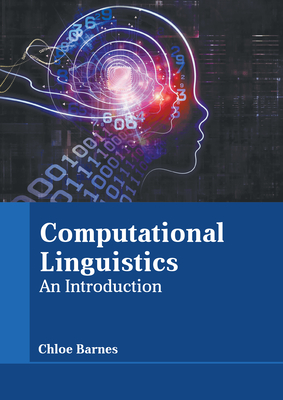理解对话:语言使用和社会互动
IF 5.3
2区 计算机科学
Q2 COMPUTER SCIENCE, ARTIFICIAL INTELLIGENCE
引用次数: 0
摘要
理解对话:语言使用和社会互动代表了对心理语言学和认知科学经典理论的背离;与其将个人的孤立讲话作为起点,扩展到适应对话,不如将重点放在发展一种适合对话本身的模式上,牢记对话作为一种具有高度合作成分的活动的重要方面。作为一名具有语言学背景的自然语言处理研究人员,我发现所提出的对话模型提供的可能性非常有趣。虽然这本书本身没有触及自动对话的潜力,但我不可避免地从计算语言学家的角度来写这篇评论,并考虑到这些方面。《理解对话》建立在许多先前的作品基础上,包括许多作者自己的研究和理论,提出了共享工作空间框架,这个框架不仅可以理解对话,还可以理解一般的合作活动,其中对话被视为一个子类型。基于Bratman(1992)的共享合作活动概念,该框架提供了一个共同的环境,对话者可以通过对空间的贡献(例如用行动或话语),以及通过感知和处理自己或其他参与者的产品来进行互动。作者并没有将他们的研究局限于语言交流:他们的许多例子,特别是在书的开头,都是非语言的(例如,握手,跳探戈,打单打网球);其他主要是身体上的,但也很可能涉及语言交流(比如共同建造平板家具);还有一些纯粹是语言上的(例如,建议去哪家餐馆吃午饭)。从语言学和非语言学的角度来看,对齐的概念对这个框架都非常重要,这是本书的主要灵感之一,之前由同一作者在《走向对话的机械理论》中提出过。当个体通过联合空间进行交互时,对齐关系到他们的表征在概念层面上的等价性,关于他们在共享环境中的目标和相关道具(对话模型对齐)和在工作空间中共享的语言表征(语言对齐)。粗略地说,在第二种(语言学)情况下,例如,这可能对应于个体是否在语音方面(声音是否被正确感知?)或在词汇语义方面(他们是否理解所说的单词的相同参考?)对话语有相同的表征。从这里可以解释一些不同的对话本文章由计算机程序翻译,如有差异,请以英文原文为准。
Understanding Dialogue: Language Use and Social Interaction
Understanding Dialogue: Language Use and Social Interaction represents a departure from classic theories in psycholinguistics and cognitive sciences; instead of taking as a starting point the isolated speech of an individual that can be extended to accommodate dialogue, a primary focus is put on developing a model adapted to dialogue itself, bearing in mind important aspects of dialogue as an activity with a heavily cooperative component. As a researcher of natural language processing with a background in linguistics, I find highly intriguing the possibilities provided by the dialogue model presented. Although the book does not itself touch upon the potential for automated dialogue, I am inevitably writing this review from the point of view of a computational linguist with these aspects in mind. Building on numerous previous works, including many of the authors’ own studies and theories, Understanding Dialogue presents the shared workspace framework, a framework for understanding not just dialogue but cooperative activities in general, of which dialogue is viewed as a subtype. Based on Bratman’s (1992) concept of shared cooperative activity, the framework provides a joint environment with which interlocutors can interact, both by contributing to the space (with actions or utterances for example), and by perceiving and processing their own or the other participants’ productions. The authors do not limit their work to linguistic communication: Many of their examples, particularly at the beginning of the book, are non-linguistic (e.g., hand shaking, dancing a tango, playing singles tennis); others are primarily physical, but will most likely also involve linguistic communication (such as jointly constructing flat-pack furniture); and others are purely linguistic (e.g., suggesting which restaurant to go to for lunch). The notion of alignment is highly important to this framework both from a linguistic and non-linguistic perspective, and is one of the main inspirations of the book, having previously been presented in Toward a Mechanistic Theory of Dialogue by the same authors. As individuals interact via the joint space, alignment concerns the equivalence in their representations at a conceptual level, with respect to their goals and relevant props in the shared environment (dialogue model alignment) and linguistic representations shared in the workspace (linguistic alignment). Roughly speaking, in this second (linguistic) case, this may for instance correspond to whether or not the individuals have the same representation of the utterance in terms of phonetics (were the sounds perceived correctly?) or in terms of lexical semantics (do they understand the same reference by the word uttered?). From here can be explained a number of different dialogue
求助全文
通过发布文献求助,成功后即可免费获取论文全文。
去求助
来源期刊

Computational Linguistics
工程技术-计算机:跨学科应用
CiteScore
15.80
自引率
0.00%
发文量
45
审稿时长
>12 weeks
期刊介绍:
Computational Linguistics, the longest-running publication dedicated solely to the computational and mathematical aspects of language and the design of natural language processing systems, provides university and industry linguists, computational linguists, AI and machine learning researchers, cognitive scientists, speech specialists, and philosophers with the latest insights into the computational aspects of language research.
 求助内容:
求助内容: 应助结果提醒方式:
应助结果提醒方式:


